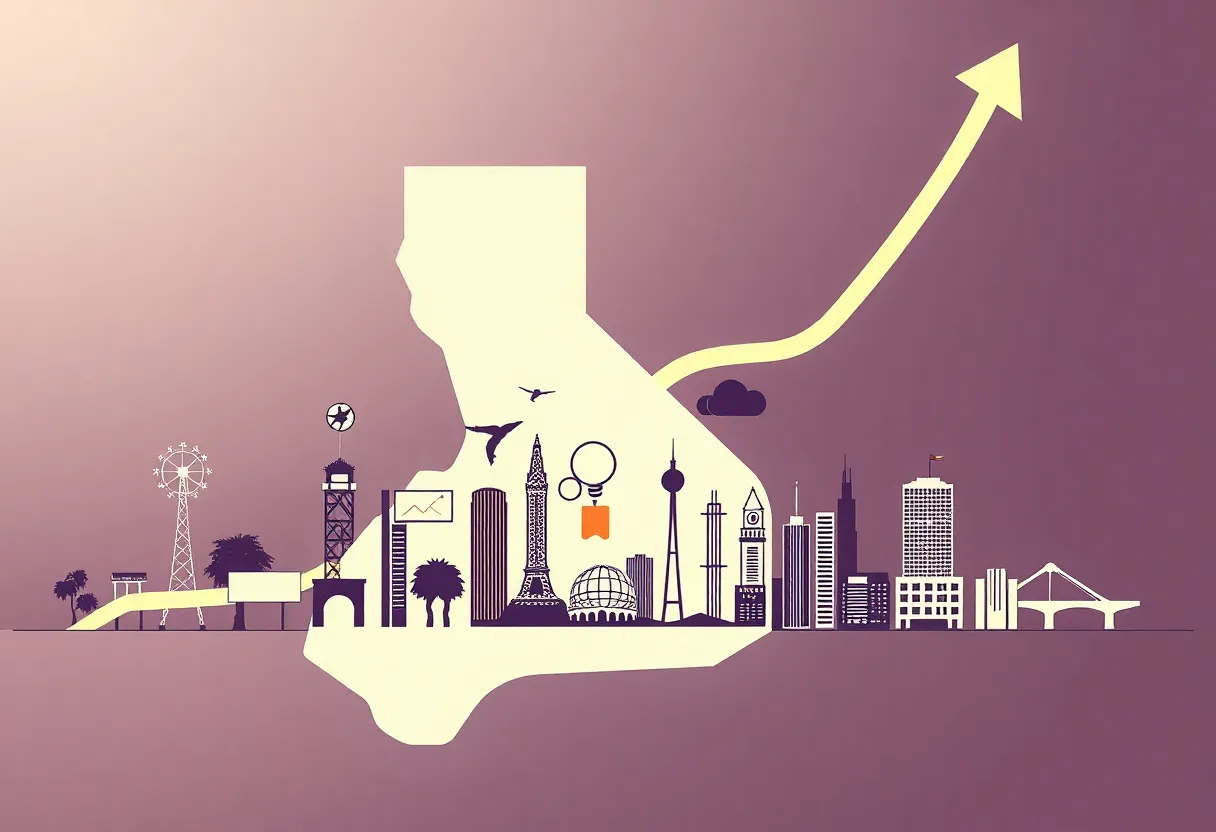News Summary
California has officially overtaken Japan as the world’s fourth-largest economy, reaching a nominal GDP of approximately $4.1 trillion. Governor Gavin Newsom attributed this achievement to strategic investments and a significant 6% growth in the state’s GDP over the past year. Despite these positive developments, Newsom expressed concern over the potential adverse impacts of federal tariffs and outlined a lawsuit against President Trump for emergency powers used to enforce these tariffs. With major contributors including technology and finance, California faces challenges such as financial inequalities and job losses while navigating its economic landscape.
California has officially surpassed Japan to become the world’s fourth-largest economy, according to an announcement by Governor Gavin Newsom. As of 2024, California’s nominal gross domestic product (GDP) has reached approximately $4.1 trillion, exceeding Japan’s GDP, which is recorded at $4.02 trillion. This noteworthy achievement places California in a unique position, with only the United States, China, and Germany maintaining larger economies.
Throughout the past year, California’s economy experienced substantial growth, achieving a 6% increase in GDP. This expansion outpaced the U.S. national growth rate of 5.3%, as well as the growth rates of other significant economies: China’s growth reached 2.6% and Germany’s was recorded at 2.9%. Governor Newsom attributes this economic success to strategic investments in people, sustainability, and innovation, indicating a focus on progressive development that seeks to enhance the state’s competitiveness on the global stage.
Despite the positive economic indicators, Governor Newsom has raised alarm over potential threats to California’s economy stemming from federal tariff policies initiated under President Trump’s administration. He emphasized that California is responsible for 14% of the nation’s GDP and supports a population of around 40 million citizens. Major contributors to California’s economic performance include the technology sector centered in Silicon Valley, real estate, and finance.
In light of tariff concerns, Governor Newsom has initiated a legal response by filing a lawsuit against President Trump, challenging his use of emergency powers to enforce tariffs. The lawsuit, submitted to federal court on April 16, claims that the president lacks the legal authority to impose tariffs unilaterally on foreign nations, including Mexico, China, and Canada. According to the state’s analysis, the tariffs have disrupted supply chains, inflated costs, and inflicted significant economic damage, amounting to billions of dollars for California.
The lawsuit critiques the invocation of the International Economic Emergency Powers Act, labeling it as “unlawful and unprecedented.” In 2024, California engaged in approximately $675 billion worth of two-way trade, with Mexico, Canada, and China being its top trading partners. Notably, over 40% of California’s imports originated from these three countries, totaling close to $203 billion out of more than $491 billion in total imports last year.
Additionally, twelve other states have filed similar lawsuits against the Trump administration regarding the economic impact of tariffs on American consumers and businesses. Experts suggest that these tariffs could be particularly detrimental to California’s substantial $300 billion trade and logistics sector, which is heavily reliant on the stability and efficiency of global markets.
While California’s economy enjoys the spotlight as a global powerhouse, challenges persist. The state grapples with financial inequalities and pressing issues, including housing affordability crises, homelessness, and infrastructure deficits. Furthermore, there has been a recorded net loss of 154,000 private-sector jobs since September 2022, juxtaposed with a gain of 361,000 public sector jobs, highlighting contrasting trends in employment that raise concerns for the state’s overall economic health.
As California continues to navigate its evolving economic landscape, the divergence between robust growth metrics and underlying socioeconomic challenges illustrates the complexities facing the nation’s most populous state. The interplay between burgeoning sectors and federal policy will undoubtedly play a crucial role in shaping the future of California’s economy.
Deeper Dive: News & Info About This Topic
- Los Angeles Times
- CNN
- Politico
- Wikipedia: Economy of California
- Google Search: california economy 2025

Author: STAFF HERE HOLLYWOOD
The Hollywood Staff Writer represents the experienced team at HEREHollywood.com, your go-to source for actionable local news and information in Hollywood, Los Angeles County, and beyond. Specializing in "news you can use," we cover essential topics like product reviews for personal and business needs, local business directories, politics, real estate trends, neighborhood insights, and state news affecting the area—with deep expertise drawn from years of dedicated reporting and strong community input, including local press releases and business updates. We deliver top reporting on high-value events such as the Hollywood Bowl summer concerts, the Hollywood Christmas Parade, film premieres at TCL Chinese Theatre, and festivals at the Magic Castle. Our coverage extends to key organizations like the Hollywood Chamber of Commerce and Visit Hollywood, plus leading businesses in entertainment, dining, and tourism that define the local economy. As part of the broader HERE network, including HERELosAngeles.com, HEREBeverlyHills.com, HEREAnaheim.com, and HEREHuntingtonBeach.com, we provide comprehensive, credible insights into Southern California's dynamic landscape.





